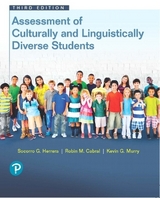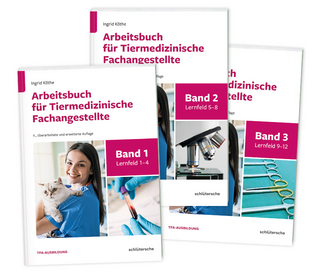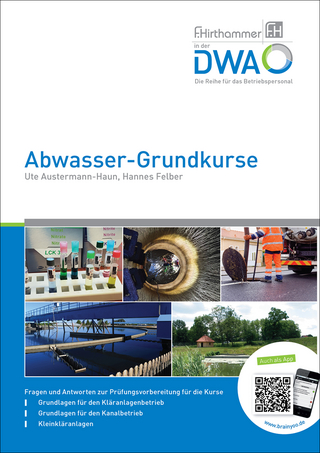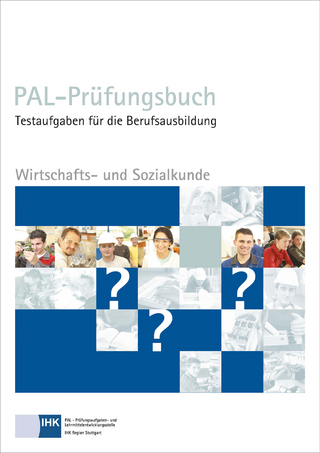
Assessment Accommodations for Classroom Teachers of Culturally and Linguistically Diverse Students
Pearson (Verlag)
978-0-13-285335-4 (ISBN)
- Titel erscheint in neuer Auflage
- Artikel merken
Dr. Socorro G. Herrera currently serves as a professor of elementary education at Kansas State University and is executive director of the Center for Intercultural and Multilingual Advocacy (CIMA). Certified in elementary education, bilingual education, and school counseling, Dr. Herrera’s recent publications have appeared in the Journal of Research in Education, Bilingual Research Journal, Journal of Hispanic Higher Education, and Journal of Latinos and Education. Her recent research and teaching in education have emphasized emergent literacy, reading strategies, the differential learning needs of second language learners, and mutual accommodation for language learning students. In addition to her scholarly research, Dr. Herrera has led Study Abroad pre-service teacher exchanges in Paraguay, Mexico, Guatemala, and China. She was chosen to participate in the International Reading Association’s Reading Literacy Research Program to Cuba for Fall 2011. Dr. Robin Morales Cabral currently serves as Director of Literacy for Diverse Populations in the Wichita Public Schools. She has a background in communicative disorders and sciences, bilingual special education, literacy and assessment for culturally and linguistically diverse students. Dr. Cabral’s years of experience as a bilingual speech-language pathologist, parent-teacher liaison, intervention coordinator, and assessment specialist have led to national speaking engagements and advisory roles with classroom teachers, special educators and school administrators dedicated to implementing best practices for CLD students. Dr. Cabral’s recent research and professional activities have emphasized assets-based high school decision making as well as strengthening teacher, school, and district capacities to ensure CLD students’ full access to an enriched core curriculum with appropriately individualized supports from early childhood to graduation, and beyond. Dr. Kevin Murry is currently an Associate Professor of Curriculum and Instruction at Kansas State University. His scholarship has emphasized the professional development of general education teachers for English language learning (ELL) students. Dr. Murry's recent research and publication have emphasized teacher readiness for best practice with ELLs, culturally responsive teaching and assessment practices, and the linguistic and cross-cultural dynamics of critically reflective and biography-driven teaching. His recent publications have appeared in the Journal of Hispanic Higher Education, Journal of Teaching and Learning, and Bilingual Research Journal. Dr. Murry has written texts for Pearson/Allyn and Bacon, as well as text chapters for Erlbaum & Associates and ATE/ACEI.
Preface
About the Authors
Chapter 1 Classroom Assessment amidst Cultural and Linguistic Diversity
What’s Different about Today’s Classroom?
Immigration Fallacies and Facts
The Next Generation Of Students: America’s Potential
What’s Changed about the Readiness of Classroom Teachers for Student Diversity?
What’s Evolved about Appropriate Assessment Practices for CLD Students?
Chapter 2 Authentic Assessment
Rationale for the Use of Authentic Assessments
Reliability and Validity of Authentic Assessments
Types of Authentic Assessment
Performance-Based Assessments
Portfolios
Self-Assessment and Peer Assessment
Interview-Based Assessment
Play-Based Assessment
Cooperative Group Assessment
Dialogue Journals and Scaffolded Essays
Scoring and Related Issues of Authentic Assessment
Rubrics
Checklists and Questionnaires
Additional Considerations
Chapter 3 Response to Intervention, Preinstructional Assessment, and the CLD Student
What Is Response To Intervention?
What Does RTI Look Like?
Tiers of RTI Instruction
Preinstructional Assessment
Formal and Informal Preassessment
History/Herstory: What the CLD Student Brings to the Classroom
Biopsychosocial History of the CLD Student
Education History of the CLD Student
Language History of the CLD Student
Preassessment Resources: Home Visits and School Conferences
Chapter 4 Assessment of Acculturation
Acculturation and Enculturation Processes
When What Used to Work No Longer Works
Acculturation Dynamics
Relationship between Cultural Identity and Acculturation
The Role of Acculturation and Emotions in Learning
Assessing Level of Acculturation
Informal Assessment of Acculturation
Formal Assessment of Acculturation
Impact of Acculturation on Appropriate Methods of Assessment
Using Acculturation Information to Inform Instruction
Cultural Differences as Learning Assets
Programming-Related Issues: Assessment of Acculturation
Identification
Placement
Monitoring
Exit
Chapter 5 Assessment of Language Proficiency
Rationale for Language Proficiency Assessment
Rationale for Assessing Primary Language Proficiency
Rationale for Assessing English as a Second Language
Key Elements of Language Acquisition and Proficiency
Syntax
Morphology
Phonology
Semantics
Pragmatics
Informal Assessment of Language Proficiency
Key Issues in Informal Assessment
Home Language Surveys
Parent Interviews
Informal Assessment of Academic Language Proficiency
Formal Assessment of Language Proficiency
Standardized Formal Assessments of Language Proficiency
Further Considerations
Programming-Related Issues: Language Proficiency Assessment
Identification
Placement
Monitoring
Exit
Chapter 6 Assessment of Content-Area Learning
Formative Content-Area Assessment
Informal Formative Assessment
Formal Formative Assessment
Summative Content-Area Assessment
Informal Summative Assessment: Portfolios as Authentic Assessments
Formal Summative Assessment: High-Stakes Tests
The Role of Language in Content-Area Assessment
Bias in Classroom-Based Content-Area Assessments
Programming-Related Issues: Content-Area Assessment
Identification
Placement
Monitoring
Exit
Chapter 7 Special Education Issues in the Assessment of CLD Students
What Is Special Education?
Is Disproportionality Really an Issue?
Why Should We Be Concerned?
Implications for Classroom Teachers
The Importance of Information: Review and Request
Preassessment for Special Education
Attention to the Assessment Process
Reevaluation Considerations
Chapter 8 Postinstructional Assessment
Teacher-Driven Postinstructional Assessment
Linguistic Postinstructional Assessment
Academic Postinstructional Assessment
Cognitive Postinstructional Assessment
Sociocultural Postinstructional Assessment
But What about the Grade?
Conclusion
Appendix:
Appendix A: TESOL Standards of Best Practice
Appendix B: Teacher Resources
Glossary
References
Index
| Erscheint lt. Verlag | 13.7.2012 |
|---|---|
| Sprache | englisch |
| Maße | 185 x 230 mm |
| Gewicht | 408 g |
| Themenwelt | Schulbuch / Wörterbuch ► Wörterbuch / Fremdsprachen |
| Sozialwissenschaften ► Pädagogik ► Berufspädagogik | |
| ISBN-10 | 0-13-285335-3 / 0132853353 |
| ISBN-13 | 978-0-13-285335-4 / 9780132853354 |
| Zustand | Neuware |
| Informationen gemäß Produktsicherheitsverordnung (GPSR) | |
| Haben Sie eine Frage zum Produkt? |
aus dem Bereich



